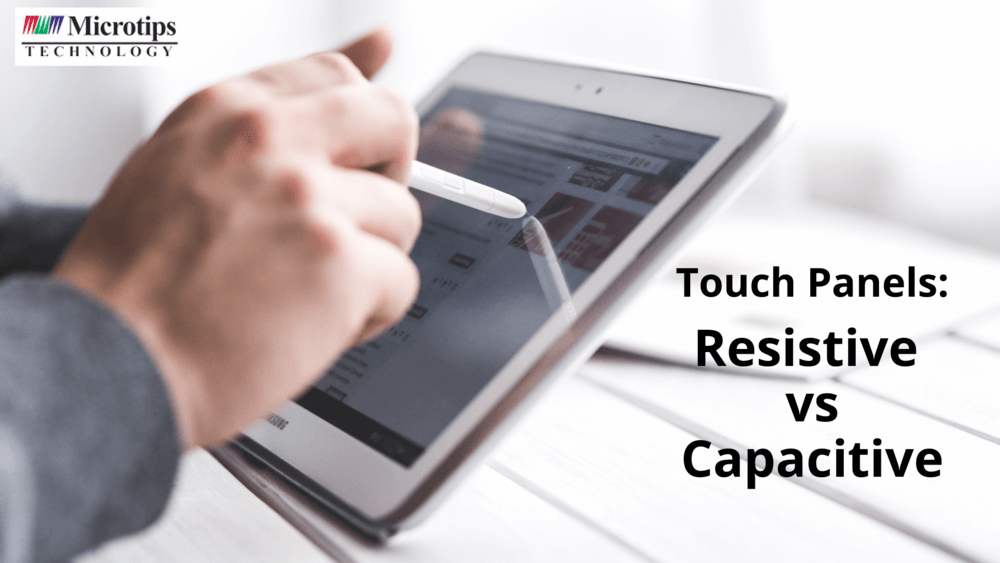Touch panels are layered screens allowing users to interact with different devices. These touch panels are available in two types based on their formation and applications: Resistive and Capacitive.
Resistive touch panels, also known as RTP, enable single-touch which means it only accepts input given in the form of pressure by one touch of your finger or stylus, a writing utensil. The composition of RTP includes the layers of polyethylene terephthalate (PET) coated with indium-tin-oxide (ITO) and the glass substrate at the top of its structure.
Capacitive touch panel, popularly known as PCAP or PCT or Projected Capacitive Touch Panels, allows multitouch where it takes electrical properties of the human body as the input as multiple points of contact. The composition of PCAP constitutes a projected capacitive touch screen and a flexible printed circuit connecting the touch screen controller laminated by a protective lens.
Market Value
RTPs were used largely before the arrival of PCAPs. However, the applications of RTPs reduced to small-scale applications as smart devices were seeking touch panels that would be of high contrast, more efficient, and multitouch. RTPs are easy to produce and more affordable. Some of the common and well-known applications of RTPs include electrical and mechanical equipment, point-of-sale devices, ATM machines, wearables, and digital cameras.
On the other hand, PCAPs are used in devices with high-performing and clearer screens with increased optical transmissivity and gestures.
Parameter-Based Comparison
PCAPs are dominating the market in all significant factors any aspiring customer would seek in a touch panel today.
Let’s have a quick tabular comparison between the two types of touch panels;
| Parameter | RTP | PCAP |
| Production Complexity | Easy | Comparatively complex |
| Touch-Point | Single-Touch | Multi-Touch |
| Durability | Low | High |
| Cover Glass | Not Available | Available |
| Cost | Low | Comparatively High |
Microtips Technology, a US-based touch panel manufacturer has developed 4,5 & 8 wire resistive, multipurpose PCAPs, integrated touch panels, and film sensor packages. They have kept their touch panel developments waterproof, of precise experience, and responsive to glove and stylus touch. These touch panels are being adjusted in different fluids i.e. PCAPs in OLED screens.

